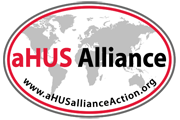aHUS is a rare disease and rare disease patients are said to suffer from lack of awareness of their disease and isolation.
How true is that of aHUS anymore?
From that time when patient advocates’ Bill and Cheryl’s odyssey began 25 years ago to now, aHUS is in a different world.
But are needs wholly satisfied and if not , what is not?
To simplify it, needs for information and support boil down to having :
- a capability for self management of a chronic disease
- quality information for specific and all demographics
- access to specialist centres with knowledge to help with care
- means to overcome social isolation
From them empowered aHUS patient can rise.
With the best will in the world not all of these can result satisfactorily from just the basic doctor -patient relationship.
Help is needed.
For a rare disease like aHUS with probably only around 27,000 patients spread throughout the world with long distances from the nearest known fellow patient getting solutions through occasional in person meetings is helpful but not entirely fulfilling.
Fortunately, as Bill and Cheryl realised, providing e sources was going to be the way forward.
They provided the first sources of good aHUS information, developed a relationship with an emerging expert centre in Iowa and provided a self built social media platform for users to interact in a manner that was both transparent and beneficial to all aHUS “searchers” but allowed 121 private exchanges too
Did that satisfy everyone? Not at all, some wanted more privacy for example and other ways to get more information and support.
Also technology was changing at a faster and greater pace and so were e-sources. What e- sources?
Well basically these:
- Websites – more static websites popped up as patient advocacy grew in nations. Each addressing their nations information needs. Essentially providing news about progress towards eculizumab becoming available in their countries but were also about empowering the aHUS patient. Apart from the Foundation for children with Atypical HUS none developed integrated interactive sites. Raising awareness of these sites and different languages were and remain a barrier to fuller inclusivity. Particularly for sites which are global in scope and are effectively there for the 27,000 and their empowerment.
- Telehealth- virtual meetings – usually by some aHUS Centres of Excellence/ Expertise removed limitations of location distance between patient and expert. But these centres were few and not all eligible patients were engaged. Little progress has been made over the past decade to develop them.
- Social networking platforms – initially patient advocacy groups used these platforms to create awareness of their existence and their work and still do to bring viewers to the quality research information on their sites. They also became places to go to contact with and gain emotional support for others in the same situation. Breakaway groups were formed for “differentiated” same situations- adults and parents of children with aHUS. They are dynamic communities in which those new to aHUS join in and many of those who have adjusted to it eave. Benchmarking of comparative self care management plays a part in the value added by this type support resource.
- Mobile Apps- not very prevalent, if at all, in the aHUS world but these can provide information , health tracking and quick links to useful resources.
One thing is for certain there is always more that can be done for information and support.
It is also not always easy for aHUS folk to know about what is available and for those providing it to make themselves visible enough to those seeking . But there plenty of e sources to satiate anyone’s thirst for disease information and contact.
Compared to the situation Bill and Cheryl found support and information is much more plentiful to day.
E-source capability has helped disparate people to join in isolation busting global events like aHUS Awareness Day.
However, without knowing how many “shy viewers” there have been of e sources today, the in roads to the 27,000 prevalent patient population ,and their many more thousands of families and friends, probably has only reached a quarter of the way.
Language barriers and access to the online technology for all remain hurdles for the potential that e sources have brought.
There are threats and opportunities to the status quo too.
aHUS nomenclature change offer threats to aHUS sites and organisations identity when the name is made redundant. Also unless a new generation take up the baton of responsibility for platforming we could see the demise of aHUS organisations who have for more than two decades been pivotal in driving up information and reducing isolation for many.
Article No. 734

